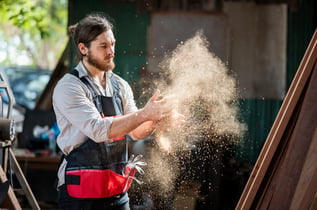Dust is an inevitable part of the woodworking process. While messy and frustrating at times, did you know that dust can also be very dangerous in large quantities? According to the Occupational Safety and Health Administration (OSHA), “any combustible material can burn rapidly when in a finely divided form. If such a dust is suspended in air in the right concentration, under certain conditions, it can become explosible.”
The U.S. Chemical Safety and Hazard Investigation Board (CSB) identified 281 combustible dust incidents between 1980 and 2005 that led to 119 worker deaths, 718 injured workers, and extensive damage to numerous industrial facilities. Any facility that does woodworking or any type of process that creates dust needs to be aware of these hazards.
A dust collection system and good housekeeping program are critical to protecting your facility and employees from combustible dust. Read through our safety summary containing the basic requirements for dust collection systems.
The best way to ensure your facility is adequately protected is to work with a qualified dust collection engineer. Also check out these housekeeping tips from our safety summary.
- Clean surfaces of accumulated dust, such as rafters, tops of equipment, hanging lights, ductwork, etc.
- Use only UL or FM listed anti-static vacuums.
- Follow wet sweeping procedures.
- Maintain a daily housekeeping log.
- Don’t use floor sweeps because metal could be sucked up and cause a spark in the dust collector.





